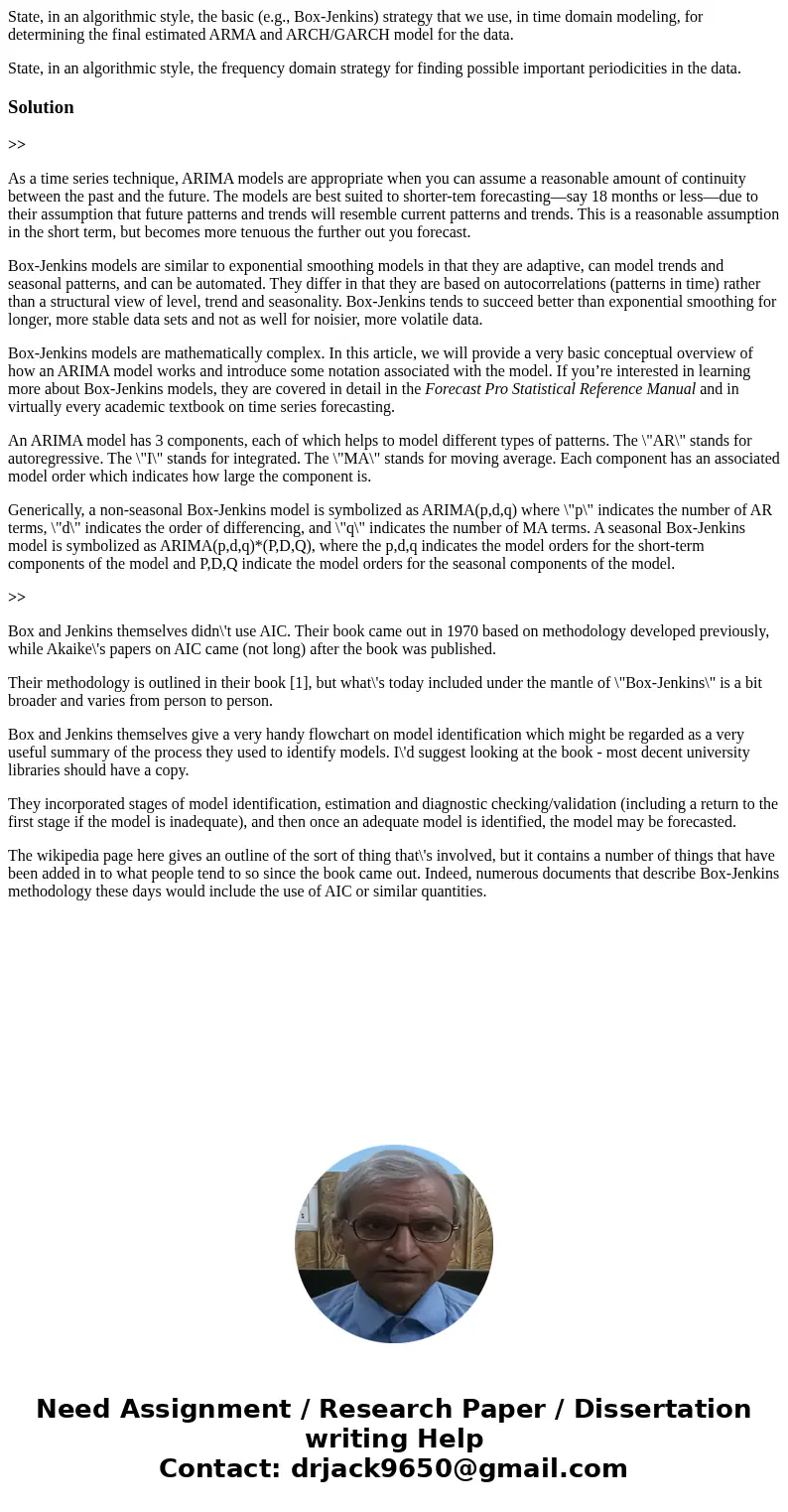State in an algorithmic style the basic eg BoxJenkins strate
State, in an algorithmic style, the basic (e.g., Box-Jenkins) strategy that we use, in time domain modeling, for determining the final estimated ARMA and ARCH/GARCH model for the data.
State, in an algorithmic style, the frequency domain strategy for finding possible important periodicities in the data.
Solution
>>
As a time series technique, ARIMA models are appropriate when you can assume a reasonable amount of continuity between the past and the future. The models are best suited to shorter-tem forecasting—say 18 months or less—due to their assumption that future patterns and trends will resemble current patterns and trends. This is a reasonable assumption in the short term, but becomes more tenuous the further out you forecast.
Box-Jenkins models are similar to exponential smoothing models in that they are adaptive, can model trends and seasonal patterns, and can be automated. They differ in that they are based on autocorrelations (patterns in time) rather than a structural view of level, trend and seasonality. Box-Jenkins tends to succeed better than exponential smoothing for longer, more stable data sets and not as well for noisier, more volatile data.
Box-Jenkins models are mathematically complex. In this article, we will provide a very basic conceptual overview of how an ARIMA model works and introduce some notation associated with the model. If you’re interested in learning more about Box-Jenkins models, they are covered in detail in the Forecast Pro Statistical Reference Manual and in virtually every academic textbook on time series forecasting.
An ARIMA model has 3 components, each of which helps to model different types of patterns. The \"AR\" stands for autoregressive. The \"I\" stands for integrated. The \"MA\" stands for moving average. Each component has an associated model order which indicates how large the component is.
Generically, a non-seasonal Box-Jenkins model is symbolized as ARIMA(p,d,q) where \"p\" indicates the number of AR terms, \"d\" indicates the order of differencing, and \"q\" indicates the number of MA terms. A seasonal Box-Jenkins model is symbolized as ARIMA(p,d,q)*(P,D,Q), where the p,d,q indicates the model orders for the short-term components of the model and P,D,Q indicate the model orders for the seasonal components of the model.
>>
Box and Jenkins themselves didn\'t use AIC. Their book came out in 1970 based on methodology developed previously, while Akaike\'s papers on AIC came (not long) after the book was published.
Their methodology is outlined in their book [1], but what\'s today included under the mantle of \"Box-Jenkins\" is a bit broader and varies from person to person.
Box and Jenkins themselves give a very handy flowchart on model identification which might be regarded as a very useful summary of the process they used to identify models. I\'d suggest looking at the book - most decent university libraries should have a copy.
They incorporated stages of model identification, estimation and diagnostic checking/validation (including a return to the first stage if the model is inadequate), and then once an adequate model is identified, the model may be forecasted.
The wikipedia page here gives an outline of the sort of thing that\'s involved, but it contains a number of things that have been added in to what people tend to so since the book came out. Indeed, numerous documents that describe Box-Jenkins methodology these days would include the use of AIC or similar quantities.

 Homework Sourse
Homework Sourse